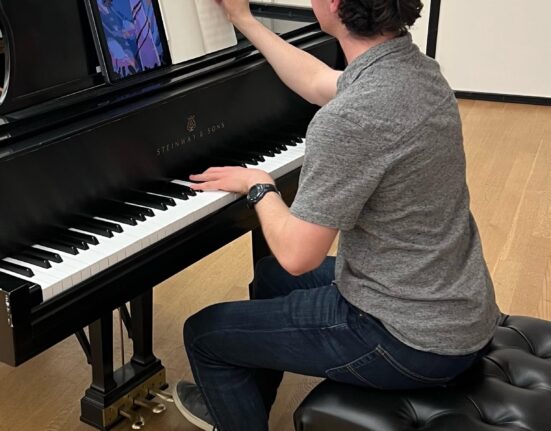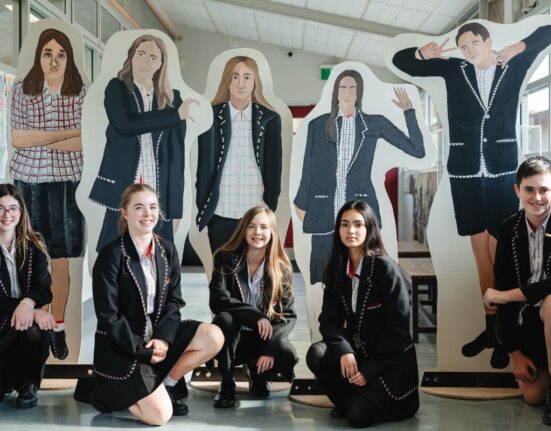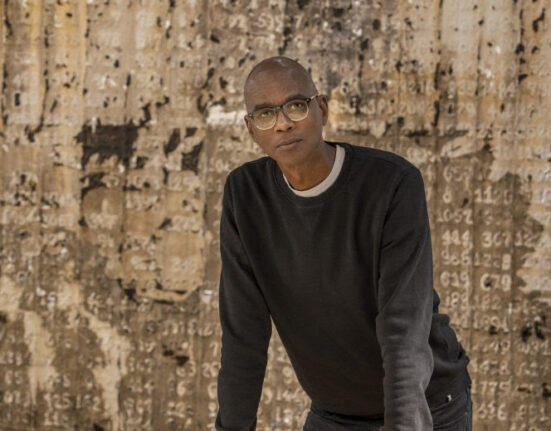The Smithsonian’s National Museum of African Art will showcase works by sculptor and printmaker Bruce Onobrakpeya, considered one the fathers of postcolonial Nigerian modernism. On view June 21 through Jan. 21, 2025, “Bruce Onobrakpeya: The Mask and the Cross” will feature works by the artist from 1966 through 1978, a period when he completed multiple commissions for the Catholic Church, including his seminal “Fourteen Stations of the Cross” series. The exhibition will also recognize Onobrakpeya’s legacy—inspiring generations of visual artists in Nigeria—with artworks from the museum’s collection that reflect Onobrakpeya’s influence.
“Central to the exhibition ‘Bruce Onobrakpeya: The Mask and the Cross’ lies a profound cultural significance and institutional collaboration,” said guest curator Janine Gaëlle Dieudji. “It not only celebrates the outstanding career of the esteemed artist Dr. Bruce Onobrakpeya, who was the honoree at the National Museum of African Art’s 50th anniversary, but also represents global Africa through the lens of spirituality. The works of artists, whose printmaking practices significantly shaped and advanced contemporary art in Nigeria in the 1960s, further enrich this narrative.”
Blending Christian iconography, Nigerian folklore and West African traditions, Onobrakpeya’s art interprets spiritualism through a global lens. Biblical stories are presented with Nigerian characters and environments, such as the “Passion of Christ” depicting Roman soldiers in British military uniforms and Jesus in Nigerian robes. In an interview with Lauren Tate Baeza, the Fred and Rita Richman Curator of African Art at the High Museum of Art in Atlanta, Onobrakpeya said that he intended to “bring out what Christ means to our people in a way they can understand.” He synthesized Western influences with traditional African cultures, helping redefine artistic traditions in postcolonial Nigeria.
A section of the exhibition developed exclusively for the National Museum of African Art features works by Onobrakpeya’s contemporaries represented in the museum’s collection. These Nigerian printmakers similarly explore faith and spirituality through the lens of African heritage and mythology. Artist Rufus Ogundele blends his Christian upbringing under the Anglican Christ Mission Society with traditional West African culture, particularly imagery of the Yoruba god of iron Ogun, in his linocuts. The result was a hybrid illustration of Christian stories and Nigerian aesthetics. Four additional printmakers featured in this section include Adebisi Fabunmi, Yinka Adeyemi, Solomon Irein Wangboje and Oluwole Olayemi.
“Seeing Bruce Onobrakpeya’s works in dialogue with his peers reveals the conversational nature of artistic practice—in Nigeria, on the African continent and broadly across time and geographies,” said John K. Lapiana, interim director of the National Museum of African Art. “As the museum celebrates its 60th anniversary, the works and themes in this exhibition reflect many of the ideas that the museum was founded on: exploring cross-cultural influences and perspectives, developing and articulating diverse cultural identities, and presenting the rich variety of African art.”
Originally organized and shown at the High Museum of Art in Atlanta in 2023, this is Onobrakpeya’s first major solo exhibition at a museum in the United States. Programming related to the exhibition will be announced later this year.
The presentation at the National Museum of African Art is supported by Lilly Endowment Inc.
About Bruce Onobrakpeya
Onobrakpeya (born 1932) began his training as a painter at the Nigerian College of Arts, Science and Technology in Zaria, northern Nigeria, in 1957. In 1958, he became a founding member of the Zaria Arts Society, which formed at the college to decolonize the visual arts and ultimately developed the “natural synthesis” aesthetic philosophy, which fused African artistic tradition with Western techniques to visually articulate a new national and cultural identity in early postcolonial Nigeria. His career has spanned over six decades, during which he developed new printmaking techniques, experimented with existing modes of artmaking and established himself as pioneer in West African modern and contemporary art.
About the African Art Museum
The Smithsonian’s National Museum of African Art is the only museum in the world dedicated solely to the collection, conservation, study and exhibition of Africa’s arts across time and media. The museum’s collection of over 13,000 artworks spans more than 1,000 years of African history and includes a variety of media from across the continent. For more information, call 202-633-4600 or visit the museum’s website. For general Smithsonian information, the public can call 202-633-1000. Follow the museum on X, YouTube, Instagram and Facebook.
Beginning as a private educational institution in 1964 to promote cross-cultural understanding, the museum is now celebrating its 60th anniversary. Founded by Warren M. Robbins, a former U.S. Foreign Service officer, it started when Robbins showcased his personal collection in a Capitol Hill townhome that had once been the home of Frederick Douglass. Robbins was inspired by the Civil Rights Movement and motivated by a desire to share how African art inspired Western art. The museum joined the Smithsonian Institution in 1979 and has continued to expand Robbins’ vision and collection for six decades.
# # #
SI-206A-2024







